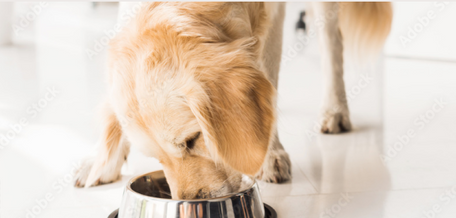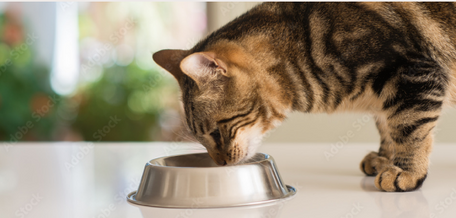Raw dog food diets have exploded in popularity over the last several decades. So what is raw dog food? What are the benefits of a raw dog food diet? Can raw dog food make my dog sick? Raw dog food for beginners can be confusing at first! To better understand it, let’s dive into the history, standard terms, and common questions beginners have about raw pet food!

What is Raw Dog Food?
Raw diets consist of raw uncooked meat and are formulated to mimic the feeding habits of the pet’s ancestors. The PMR and the BARF Diets are two standard models used when formulating raw diets. Some diets also include vegetables and milk as additional supplements. We have the definitions listed below.
Common Dog Food Terms
BARF Diet
BARF stands for Biologically Accurate Raw Food. The BARF diet uses formulas to mimic what their ancestors would have eaten in the wild. Barf Diets include fresh uncooked meat and bones like the PRM diet. BARF diets sometimes include herbs, vegetables, dairy products, and other supplements, unlike the PMR diets.
Prey Model Raw (PMR)
The goal of the PMR diet is to eliminate all processed ingredients found in kibble along with any adverse side effects from a plant-based diet. PMR diets follow these ratios.
- 80% muscle
- 10% bone content
- 5% liver
- 5% other organ
Kibble
Kibble is an alternate name for dry cat and dog food. It is the most commonly available version of commercial dog food available. While it is cheap and readily available, health issues come with feeding only processed food.
History of Raw Dog Food
Dry dog food, also known as kibble, was invented in 1860. Kibble proved to be more convenient so pet owners started feeding kibble instead of raw food. In 1993, Dr. Ian Billinghurst published his findings in Give Your Dog a Bone. In this book, he discussed the benefits of raw feeding that he had seen during his veterinarian career. He has written many books since, but this was the one that kickstarted the current raw dog food movement. It is still one of the most well-known books on fresh raw dog food diets to this day!
Is Raw Food Good for Dogs?
Dogs have lived on raw meat for thousands of years! But, a raw dog food diet must be appropriately balanced to supply all the nutrients your dog needs. When formulating our mixes of raw dog food, we consulted Doctor Billinghurst. He has over 50 years of experience in veterinary medicine and is the founder of the BARF diet (Biologically Accurate Raw Food). From him, we learned that variation is essential, and a properly balanced mix will include multiple types of meat, ground bone, tripe, and vegetables. A balanced raw dog food diet will provide all the nutrients your dog needs with no need for supplements!

Is Raw Food Better for Dogs?
Yes! A properly balanced raw diet will be better than processed dog food. Raw dog food usually arrives frozen with instructions on keeping it fresh. Contrast this with kibble. The ingredients in kibble are processed together and cooked. Preservatives are added to prevent spoilage. Also, lower-end brands have a lot of carbohydrates and include too much sugar. That’s what it’s like when your dog only eats kibble! Would you want to eat only chicken nuggets for your entire life?
Also, raw food is high in protein. A high protein raw diet will help your dog maintain a healthy weight ratio. Dogs are carnivores, and their digestive systems are designed to primarily process meat. If you decide to feed your dog raw food, his digestive health will increase!

What Raw Foods Can Dogs Eat?
We consulted Dr. Billinghurst, the founder of the BARF diet, to find the best mixes when designing our formulas. According to the BARF model, your raw dog food should include 80% Meat, 10% organs, 5% Bone, and 5% other supplements. Variation is also essential. If you want to create your raw mixes, we recommend changing the vegetable supplements according to season. For example, our mixes may contain lettuce, peppers, cantaloupe, oregano, alfalfa, and many other options depending on the time of year.

Can Raw Dog Food Be Cooked?
Cooking raw dog food will alter the nutritional makeup of the food and remove valuable nutrients your dog needs for a healthy diet. We highly discourage cooking blends that include bone. Cooking bones removes nutrients and makes them more brittle. Cooked bones can break into sharp shreds and will damage your pet’s digestive tract!
Can Raw Dog Food Be Refrozen?

Thawing and refreezing meat will break down the cell structure of the meat. While you can do it, we do not recommend repeatedly refreezing it. If you bought a large batch of food, we recommend thawing the batch, separating it into smaller meal-sized portions, then refreezing it. You will only need to thaw a small portion for each meal.
Can Raw Dog Food Go Bad
Yes, it can if it is not stored correctly. If fish is not stored correctly, it can spoil within 12 hours! The optimum temperature to store meat is -4 degrees Fahrenheit. Also, Raw meat should not sit out at room temperature for more than 2 hours. If your dog has leftovers in their bowl for two hours, it is best to just throw the food away.

How to Transition to Raw Dog Food
Cold Turkey
You can switch your dog’s diet cold turkey with no transition period. This process may be the best for some dogs, but not all dogs can handle it. Young dogs and healthy puppies will have the least issues with this transition. Changing with no transition period will have a worse effect on older dogs accustomed to kibble.
Mixed
You can combine kibble with raw food and gradually reduce the amount of kibble. We do not recommend this approach since it is difficult for pets to digest the starchy proteins and the raw food simultaneously. We recommend only trying it with healthy young dogs, adult dogs, and puppies if you want to try this approach.
Alternating Meals
With this approach, you alternate meals of kibble and raw meat. This approach is excellent for all dogs, including senior dogs and dogs with digestive problems.
Random Treats
Start by giving your dogs small treats of raw dog food. Observe your dog for any digestive discomfort. If there is none, increase these treats’ frequency and portion size until it is a complete meal. This approach is suitable for all dogs, including dogs with digestive problems and seniors.
Problems During the Transition

Photo by Christopher Ayme on Unsplash
Expect more potty breaks for the first few days on the new diet. Your dog may show signs of detoxing for the first two weeks. This means his eyes and nose may have excess discharge, and he may shed excessively. You may notice that your dog drinks less. Raw dog food has more water than kibble so your dog will not need to drink as much.
Transition Period Length
The transition period can be 1-2 days for young, healthy dogs. The transition may take 1-6 weeks for seniors and dogs with digestive problems. Remember to always observe your dog for any discomfort when transitioning to raw dog food and adjust the schedule accordingly!

Can Raw Meat Dog Food Make My Dog Sick?
Dogs are carnivores designed to eat meat. However, there are some risks. Raw dog food diets are more likely to be contaminated with salmonella and E. coli bacteria than kibble. But, If you buy correctly packaged and processed raw dog food, this will not be an issue. We understand this is a big concern, so in the sections below we included common health questions about raw dog food for beginners.
Can Raw Dog Food Cause Diarrhea?
It can if your dog has a short transitioning period. Dogs are carnivores, and their digestive tracts are designed to process raw meat so their digestive tract has to work overtime to absorb nutrients from kibble. An older dog’s digestive system accustomed to working harder to digest kibble will need some time to adapt to raw meat. Visit our raw feeding calculator for meal size recommendations if you need some help transitioning to raw dog food. Raw dog food can confuse beginners, so we wrote an in-depth guide on transition periods. Visit our guide on transitioning to raw.
Can Raw Dog Food Cause Blood In Stool?
Dogs who abruptly switch to the raw diet may have blood in their stool for the first week or so. The blood is usually from an irritation in the intestinal tract. This condition is called hematochezia and clears up in a few days. If it continues over several weeks, consult a vet. Cancer in old dogs and parasites in younger dogs can also cause hematochezia. A slow transition from kibble to a raw diet will significantly reduce the likelihood of this.
Can Raw Dog Food Cause Constipation
A few things can cause constipation. Over-feeding, too much plant-based fiber, or a raw dog food blend with too much bone added to the mix can cause constipation. A tablespoon of cod liver oil will help loosen your dog’s stool. Also, make sure your dog always has plenty of freshwater to drink.
Can Raw Dog Food Cause Worms
If the raw food was correctly processed, your dog will be safe from worms. Ensure your vendor processes fresh meat and is still frozen when it arrives—exercise caution when handling the raw meat and don’t let it sit too long in the bowl. If leftovers have been sitting out for two hours after mealtime, it is best to throw them away.
Can Raw Dog Food Cause Liver Problems?
Not likely. It can actually help the liver remain healthy because animal protein is needed for liver health. Also, dogs’ digestive systems are designed to digest meat proteins better than processed plant proteins. This means raw dog food is better for the dog’s liver than processed food!
How to Start
Thanks for reading our guide on raw dog food for beginners! Your dog deserves the best life he can get! While there can be some difficulties switching, we can assist with the transition to raw dog food for beginners. For more information to start the transition process, read the guide on our website. We recommend buying the introductory package to begin your raw feeding journey. Contact us if you have any questions that we did not include in this article! We look forward to hearing from you!





















